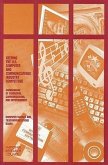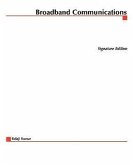The automotive industry is at an inflection point between old and new technologies. More sensors are being incorporated into vehicles in an effort to realize safer and more efficient traffic. The increase in sensors and sensor complexity has a number of implications on the next generation of vehicles. These sensors will generate a huge amount of data that needs to be processed. This sensor data places additional computational requirements on the vehicle and requires higher data rate connectivity in the vehicle. Future systems will need to transmit anywhere from tens to thousands of megabits-per-second. Existing systems manage 6Mbps. The large spectral channels at millimeter wave (mmWave) bands make it a promising candidate to realize high data rates. Furthermore, recent advances in CMOS technology make this cost-effective now. This monograph provides a survey on mmWave vehicular networks including channel propagation measurement, PHY design, and MAC design. The reader is given a comprehensive and up-to-date overview of the technical aspects the technology used in the automotive environment. It serves as a trusted starting point for all researchers and designers working on millimeter wave communication for vehicular applications.








